nlopchantamang.com
Power and Glory to Religious Apps Finally Capturing VC Attention
Aja Frost @ajavuu
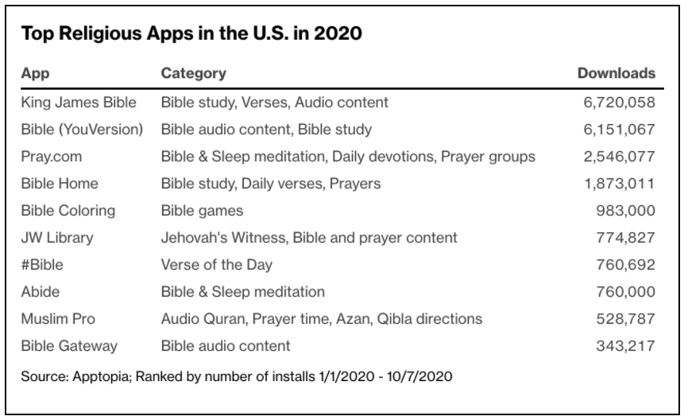
Source: App Annie via Bloomberg
The Signal: Membership in religious and faith-based apps has surged since the pandemic forced congregations online. According to Bloomberg, Christian meditation apps alone amassed 2.3m downloads from March to August 2020 -- a 325% increase compared to the same period in 2019.
Abide, for example, is a Christian sleep and meditation app that offers a library of meditations, Bible bedtime stories, and “step-by-step guides through life experiences.” Since the pandemic, the company has recorded a 45% increase in users who are also spending 52% more time on the app.
Assuming that only 5% of the 760k users pay the $39.99 annual subscription fee after the free 7-day trial, that’s ~$1.5m in annual revenue.
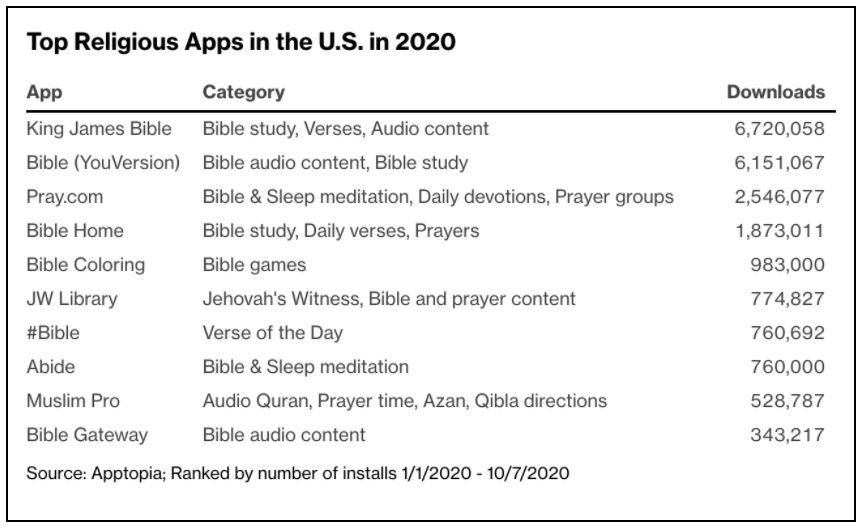
The Big Picture: Venture funding in faith-based apps was on the rise before the pandemic -- more than tripling from 2015 to 2019.
Sounds impressive, but the numbers are small. The industry’s biggest year in funding in the US was 2019, when it attracted only $18.2m, of which $15m went to one company (Tithe.ly).
When we consider that ~80% of America identifies as religious, the funding lag is even more glaring.
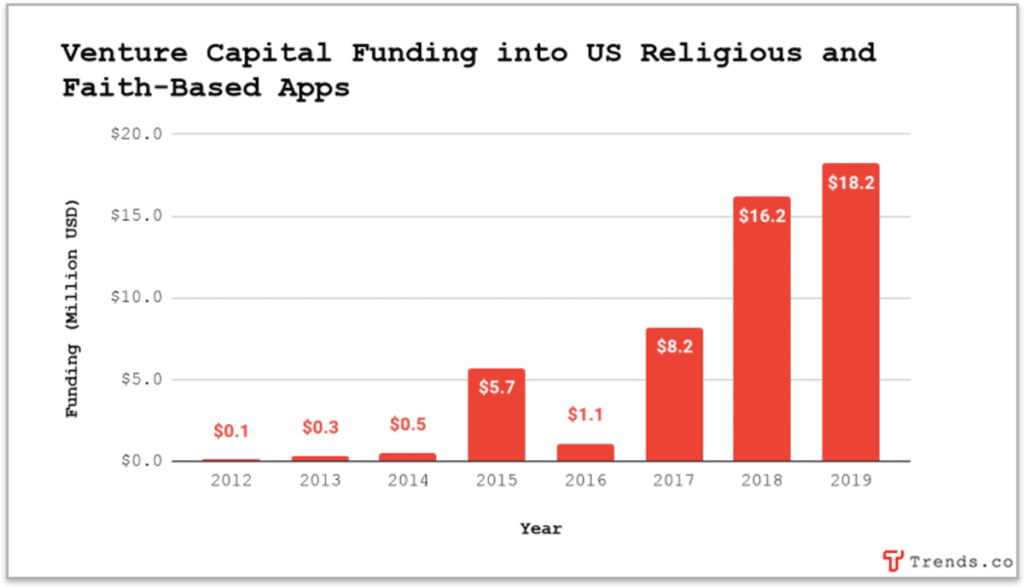
Opportunities: Demand for religious tech will continue to rise as believers find ways to practice their faith remotely. And venture capital is sure to follow. The religious tech space was referred to as a “land grab right now” by Will Robbins, an early stage investor at Contrary Capital, in an October 2020 interview with Bloomberg.
Pandemic aside, there’s a growing population of people using social media and other modern mediums to express and explore their religious and spiritual beliefs. Check out these “fancy bibles for the Instagram-age” that we wrote about last year.
On TikTok, views of videos with religious hashtags have exploded in the last 6 months:
- #Islam: 17.7B → 29.5B (+67%)
- #Christian: 6.4B → 13.9B (+117%)
- #Jewish: 671m → 1.5B (+124%)
- #Buddhist: 58m → 77.1m (+33%)
There are opportunities to address the market across a number of categories, including digital tithing, member messaging, and streaming/content. An interesting long-term play could involve horizontal integration across categories to create a one-stop “super app” for believers.
Modern Models for an Ancient Industry: Modern technologies have already made their way into the house of God. Companies like VR Church, for example, “exist entirely in the metaverse to celebrate God’s love for the world.”
They also have an active community on Discord where members “pray for each other [and] share memes that make us laugh.”

But solutions don’t have to be high tech. As Trendster Lucas Solmes writes in his church tech blog post: “There is an immediate opportunity to create an exhaustive, fully integrated SaaS for churches... like Squarespace for churches.”
You could apply the same “X for churches” model across a number of different applications, from Kickstarter (e.g., Funded by Faith) to ZipRecruiter to Meetup, where “churches” is a proxy for any religious organization.
You could even incorporate gamification by creating a Strava-like app (check out our “Strava for X” Signal) for accountability tracking, like Stickk.
Community and Marketing: Before COVID, Re-Wired Group CEO Bob Moesta argued that the church’s biggest competition is CrossFit, because it is “doing jobs that the church used to do” by creating a loyal community of millions of people all around the world that “transcends its organizational boundaries.”
This post (by church-growth coach and former pastor Rich Birch) outlines a number of lessons that churches and other religious organizations can learn from CrossFit’s meteoric growth, including focusing on results, telling stories through social media, and being “fierce and friendly.”
There are 2 takeaways here: 1) companies in this space that focus on the community aspect stand to win big, and 2) there is demand for marketing tactics that help religious organizations grow their communities and expand their reach.
Just as Trendster Adrian Boeckeler applied sales funnels and other high-level marketing strategies to the music industry, there is an opportunity to do the same for religious organizations.

Health Care: Last year we wrote a Signal about Breadfunds, a pioneering model of self-organizing, peer-to-peer (P2P) income insurance for the self-employed that originated in the Netherlands.
While the model hasn’t taken off outside the Netherlands amongst the self-employed (yet), there is an opportunity to apply it to religious organizations.
According to Trendster Josh Colter, individual church staff often aren’t big enough to get affordable health care plans, so companies like Medical Sharing offer Christian medical-sharing programs that “facilitate member-to-member cost sharing for families and individuals” for a monthly fee ranging from $140-$220.
Join the Conversation: A number of Trendsters are already in this space, including Menajem Benchimol, who told us about a digital tithing app he built for his local synagogue. He raised $3k in the first week from donations.
Will Yoo is advising a pre-seed team building a religious SaaS product, and Josh Colter worked with a team that sold a religious app to Pushpay. Be sure to join the conversation on this post if you’re interested in this space.
Aja Frost @ajavuu
Blog posts
Related Articles.
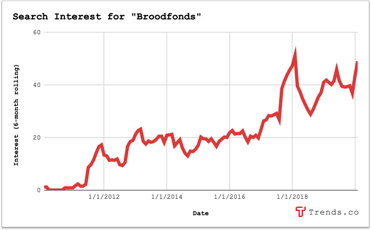
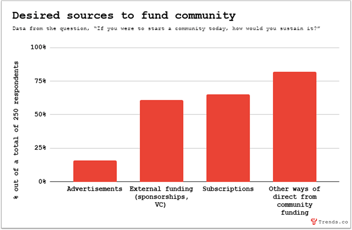
Leave a Comment